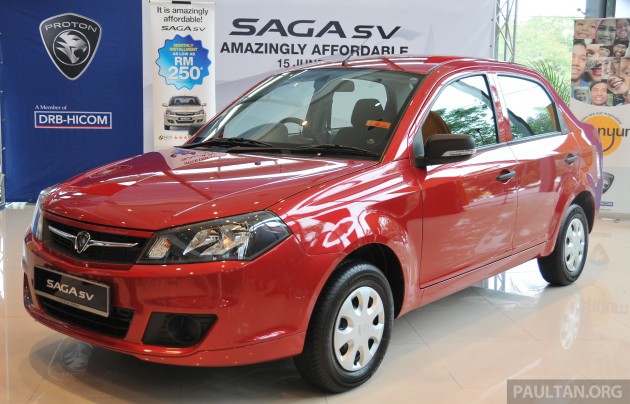Proton has announced that its sales in the third quarter of the year has increased by 27% over the corresponding quarter in 2012, with sales for Q3 this year amounting to 43,260 units. The automaker also added that compared to the second quarter of 2013, there was a 42% hike in Q3 sales.
The rise in sales figures was mainly attributed to the introduction of the Proton Saga SV, which was launched in June. Since its debut, more than 22,000 units of Saga SV have been registered – we reported earlier in the month that the automaker had received more than 30,000 bookings for the car.
“The Saga SV has received overwhelming response from the general public, and we are grateful to Malaysians for this,” said Proton’s commercial chief operating officer Hisham Othman. “We believe that the Saga has always had a soft spot in the hearts and minds of Malaysians, and with its USPs and highly competitive pricing, the car will continue to strengthen its position as the consumer’s preferred choice of an entry-level sedan,” he added.
Proton also mentioned that its Suprima S hatch has also been receiving strong interest from customers since its launch in August, but didn’t reveal sales figures for the car. The five-door hatch is set to make its debut in its first overseas market, which is Indonesia – the car is being officially launched in the republic tonight. Next up will be Australia, in November.
AD: Drive the Proton model of your dreams. Submit your details and Proton PJ will get in touch with you.
Looking to sell your car? Sell it with Carro.





















AI-generated Summary ✨
Comments generally express skepticism about Proton's sales success and the true demand for models like the Suprima S and Saga SV, citing low visible road presence and questioning the official figures. Many believe Proton's target market is primarily budget-conscious consumers needing affordable, basic vehicles rather than high-end features, and they criticize the pricing and features as insufficient for the segment. There's also skepticism about safety features' value relative to cost, with some saying Proton needs to improve quality, tech, and safety to compete effectively. Several comments touch on national pride, competition with imported brands, and the importance of volume sales for survival, with a mix of negative and supportive sentiments. Overall, sentiments lean toward doubts about Proton’s market performance and the real demand for their offerings.